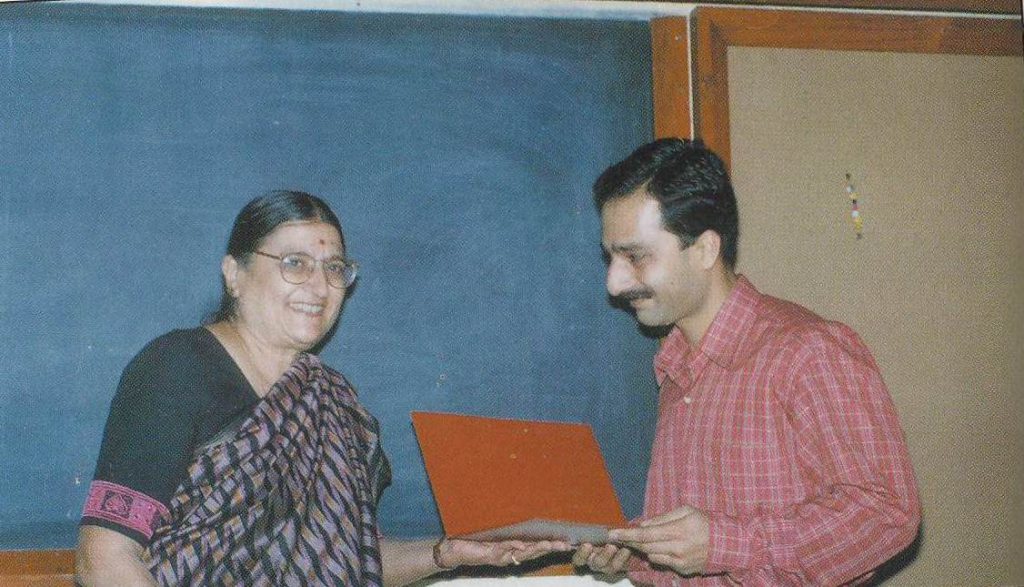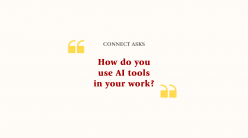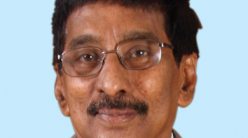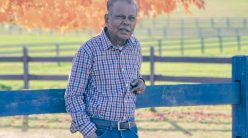The mathematician and first woman to be dean at IISc on wearing many hats

I was exhausted after facing an interview for the PhD programme at IISc’s Applied Mathematics Department [now called the Department of Mathematics], that lasted for more than three hours. Having lost hope, my father was ready to take me back home to Hyderabad. But I soon learned that I had been accepted for PhD at IISc. In August 1961, I became a student. My association with the Institute continued for the next 40 years in diverse roles, except for a few years that I spent abroad.
The department began as a “service department” to equip researchers from various disciplines with mathematical tools which could be applied to their fields of study. The teaching faculty and senior students from my department were expected to teach mathematics at all other departments, especially to those belonging to the engineering faculty.
So, in 1963, I was asked to teach mathematics to students from the departments of Metallurgy, Chemical Engineering, and Management Studies, as new course requirements for PhD and other programmes were framed. Prabhu Lal Bhatnagar, Professor at the department, said, “As you know, we are short of hands and I would like you to take up some teaching even while you are busy with your research work.”
To get [my students] interested in mathematics, I began emulating a kind school teacher by sharing anecdotes about the lives of mathematicians
That was almost an order! No promise of money or position was made. But these questions did not occur to me then and I began preparing notes for teaching. Looking back, it was fun teaching. Most students had little or no training in mathematics beyond high school. To get them interested in mathematics, I began emulating a kind school teacher by sharing anecdotes about the lives of mathematicians!
I am happy to say that some of these students are now holding high positions either in the industry or the government. I assume some may have retired from such positions after all these years.

In 1965, I completed writing my thesis on the propagation of waves, their characteristic instabilities in plasma media and its applications to astrophysical problems. To describe the behaviour of gases of neutral particles, I dedicate one chapter to Transport Properties of Ionized Gases, which employed what is known as the “BGK Model” (Bhatnagar-Gross-Krook Model, named after Professor Bhatnagar and the others). The results were good and it could be shown that this famous collisional model could work equally well for ionized (or partly ionized) gases. The thirteen-moment method that was used required evaluation of thousands of integrals, which was done painstakingly by using a calculating machine. I worked late every night to make those calculations – this work was, after all, carried out about a decade before the dawn of personal computers.
After obtaining my PhD, I continued as Lecturer at IISc. Then, for two years, I was granted leave from my position to work at the University of Cardiff and then at the Harvard Observatory.
My work in these prestigious institutions was successful – the knowledge I acquired at IISc reflected in the academic work I carried out there. In the early 1960s, with the dawn of the space age, both plasma and space physics assumed great importance. So, I began to apply my expertise in mathematics and plasma physics to understand problems in the near-earth space environment.
In 1972, I established a very important physical process that is prevalent in space and astrophysical plasmas, which is described as resonant absorption of Alfvén waves in inhomogeneous magnetic fields. (In the same year, Hannes Alfvén was the recipient of the Nobel Prize in physics for the discovery of a new type of wave, later named after him, in natural plasma which constitutes the major part of ionized matter.) This work helped us understand the various physical processes in natural plasmas. I am glad to be able to say that I can trace the origin of this work back to my PhD thesis, where I wrote a small chapter on Alfvén waves. The work has also become substantially important in the study of heating of laboratory plasmas in fusion research.
In 1982, I became a founder member of the Joint Astronomy Programme (JAP), created to foster collaboration between IISc and other academic institutions
This led to a collaboration between me and Akira Hasegawa, who was a well-known scientist at the Bell Laboratories (now Lucent Technologies). In 1982, this collaboration resulted in a monograph, The Alfvén Wave, published by the US government’s Department of Energy. Considered a classic in the field of plasma physics, the book was written during the time of postal correspondence, letters and telegrams – all forgotten now, in the age of email correspondences.
In 1982, I became a founder member of the Joint Astronomy Programme (JAP), created to foster collaboration between IISc and other academic institutions, such as the Raman Research Institute, the Indian Institute of Astrophysics, the Indian Space Research Organization and the Tata Institute of Fundamental Research. During one of the space physics conferences, an astrophysicist visiting from abroad told me that he had learnt how to see generalities in mathematical problems from my questions during the JAP interview!
That compliment was gratifying indeed. Some students from the Programme, who are now faculty members infamous observatories, have told me that they have benefited immensely from the plasma physics courses I conducted at the Department.
Life on Campus
It is here that I met my husband, SN Balasubrahmanyam, Professor at the Organic Chemistry Department and raised my two children, Vibhavaree and Sameehana. Living on campus, which was just a few minutes away from my workplace, was a blessing in disguise, especially when my children were little: I could comfortably juggle work and take care of my children.

In 1976, Satish Dhawan, the former Director, asked me if I would be interested in moving into the newly built quarters on campus. The offer came at the right time: our landlord was giving us a hard time. So my husband and I hurriedly went to the “DQ quarters” and chose a corner house. The watchman gave us the keys to the apartment immediately without asking for documents. This indicated an important fact about the Institute, that it was not bureaucratic. My daughter, around six then, asked me if “Mr Dhawan” was our new landlord, and further added, “He is so good compared to the earlier one, isn’t he?”
In the late ‘60s and ‘70s, the Institute did not have many women students we were about ten women. The rooms in the ladies’ hostel were luxurious, with a small decorated sit-out. Our warden, Kale, who was a faculty member at the Foreign Languages Section, took German and French classes at the Institute (this was required for a PhD degree then). She took great care of us. Professors’ wives living on campus also made sure we were comfortable: they invited us home on most special occasions.
When Kale retired, Rajeswari Chatterjee, Professor at the Department of Electrical Communication, was named our Warden. As she did not reside on campus, I was asked to be the Assistant Warden to help her. We had several disagreements, but we took everything in good spirit.
In 1997, a policy decision of the government raised the retirement age of academic faculty at higher educational organisations from 60 to 62 years. So, in 1999, when I turned 60, I was offered the position of Dean of Science, which is usually open for two years. I became the first woman dean in the long history of the Institute. Every day, I interacted with students and faculty. I was successful in solving difficulties faced by them at various times and noticed that girls were comfortable opening up to me.
I was quite well-known on campus for not keeping up with time. However, innumerable meetings demanded me to stay disciplined. These efforts didn’t go unnoticed by my colleagues from the administrative offices, especially DK Subramanian, Engineering Dean, who could not help but show his amusement at these efforts.
My association continues…
After my retirement, as part of the ongoing Indo-French Mathematics Programme, I continued working on evolving methods suitable for conducting classes via satellite contact between India and France. Until the end of 2004, I worked as an Emeritus Scientist at the Institute. I worked for three years, publishing a few papers. More recently, I was invited by Springer-Verlag, Berlin-Heidelberg, to contribute a chapter on space plasmas in the Handbook of the Solar Terrestrial Environment, which has now been published. I am happy that I represented India and IISc, among the other twenty-one famous scientists in the world.
Though my long association with the Institute has reached its end, I attend interesting technical or public lectures and some conferences that appeal to me. Often, while I visit the Indian Institute of Astrophysics, I drop in for a cup of tea with friends at IISc’s Faculty Club.
I strongly believe that the vision of the founder, JN Tata, has largely been fulfilled. The Institute maintains a scientific environment by producing highly trained teachers, scientists, engineers, scientific administrators, which is reflected in the atmosphere of the Institute. Though I think this might change with time, I assure myself that it could only happen superficially – the quest for knowledge and learning that the Institute inculcates in its students will last for ages.
Chanchal Uberoi was a professor in the Department of Mathematics.
This is an edited version of Uberoi’s account in “Down the Memory Lane”, published by IISc’s Alumni Association in 2009. For more stories in this series, follow these links:




